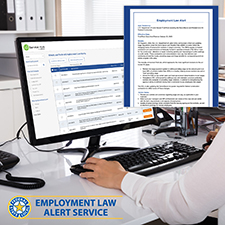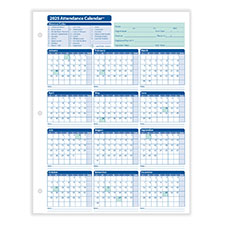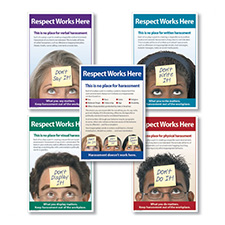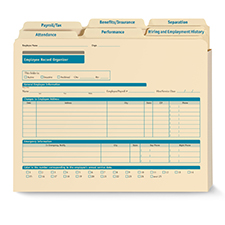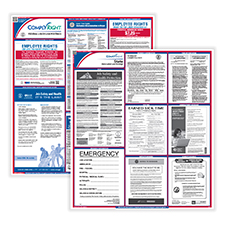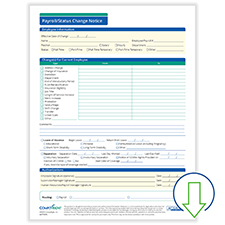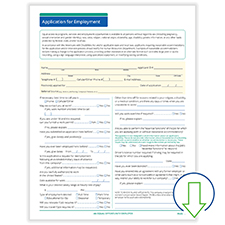
A small lawn and garden center requires female applicants to pass a lifting test. A loan repayment call center gives a written and oral pre-employment examination to all Hispanic or foreign-born applicants. A restaurant requires black applicants to undergo drug testing but doesn’t ask white applicants to do so. Can you spot the problems with these scenarios? All are examples of disparate discrimination in hiring – and can lead to legal problems.
Treating job candidates differently can open the door to disparate discrimination claims or lawsuits, particularly if the applicant is a member of a protected class. With fair hiring and employment practices in place, however, you can uphold the latest legal requirements and safeguard your business.
What Are Legally Protected Classes?
People with certain characteristics are considered part of a group, or class, protected from employment discrimination by various state and federal laws. Many of these laws were originally enacted under Title VII of the Civil Rights Act and other Equal Employment Opportunity Commission (EEOC) laws to correct patterns of unequal treatment of women and minorities. Today, this protection has expanded to include many other groups.
Federal (and many state or local) laws are designed to prevent discrimination based on the following characteristics:
- Sex/Gender – either male or female (transgender protection in some states ). Discrimination based on pregnancy, childbirth or related medical conditions is also illegal.
- Race – a grouping of people by geographic origin or common genetic characteristics (such as skin color, hair texture and certain facial features). All people may claim genealogy of one more or races and are therefore protected.
- Color – refers specifically to complexion or shade of a person’s skin.
- Religion – covers members of organized religions and people who observe specific practices or beliefs.
- Age – specifically, a person 40 years or older.
- Disability – anyone with a physical or mental impairment that substantially limits one or more major life activities, or with a history of such impairments.
- National origin/ancestry – refers to ancestral beginnings, or the physical, cultural or linguistic characteristics of a particular national group.
- Genetic Information – covers DNA testing for law enforcement, family or personal medical history, and genetic ancestry tests.
- Veteran status – protects veterans of past wars, disabled veterans, those recently deployed, and those serving in reserve positions with active service commitments.
Disparate discrimination can occur when an employer treats an applicant or employee differently based on a protected characteristic, such as race, color, religion, sex (including pregnancy, sexual orientation or gender identity), national origin, age, disability and genetic information (including family medical history).
Dos and Don’ts of Hiring to Avoid Disparate Discrimination
When it comes to disparate discrimination, it’s important to understand which hiring practices may be seen as discriminatory (even if unintentional). At the same time, your recruitment and selection practices should support the most diverse and qualified applicant pool possible. The key is to eliminate preferences, bias and favoritism — and to cast a wide net to provide ample opportunity for all. Here are some vital Dos and Don’ts:
DO: Clearly define job responsibilities
Carefully consider the exact duties that the job requires. Write a job description that includes a specific outline of each task, and how often it must be performed. The more accurate you are in your job description, the more likely you may be to get job applicants that fit your needs. Be mindful that rejecting applicants who meet the stated criteria in favor of those who don’t can cause problems.
DON’T: Require specific physical traits or genders
Rather than stating specific physical characteristics for a job, such as saying, “male weighing over 170 pounds,” (which is discriminatory) state the requirements of the job, such as “must be able to repeatedly lift 50 boxes on/off a truck”. If a job has a gender requirement, carefully consider whether someone of the opposite gender could fulfill the role with modifications. For example, if a boys’ basketball coaching position requires entering a locker room, consider whether privacy areas can be added for changing or if the job description can be changed to avoid that task.
DO: List specific job skills
If a job requires a specific skill or certification, such as fluency of a language, computer software application or CPR, state that in the job description. Be clear about whether the skill must be available on the first day, or whether it can be learned on the job.
DON’T: Go overboard with requirements
Provide an accurate description of what level of experience or education is needed to succeed in the job. For example, don’t require a college degree for a receptionist position, or an MBA for an assistant-level marketing position if that level of education isn’t essential or common for the type of job you’re offering (you might check what other companies require for similar positions).
DO: Ask everyone the same interview questions
Develop a list of questions based on the job description and skills needed -- and be consistent in asking them. You can ask different follow-up questions depending on a candidate’s response, but you need to keep these discussions non-personal and relevant to the job. Also, give all candidates an equal opportunity to explain why they would be a good fit for the job.
DON’T: Ask Illegal Questions
Avoid asking questions related to race, color, religion, sex, national origin, age, disability and genetic information. It’s illegal to discriminate based on these factors, so steer clear of any inquiries or discussions about sensitive issues. And if a candidate touches on any of these topics, clearly state your non-discriminatory hiring position and that your business upholds all fair employment practices.
DO: Be careful when taking notes
Taking notes about candidates can be useful during the selection process, but you must be careful to avoid comments related to protected statuses. Using a more uniform evaluation method (such as a scoring scale) can help you evaluate candidates fairly without risking making disparate discrimination comments.
Use Attorney-Developed Hiring Tools to Avoid Legal Missteps
To keep your hiring practices fully compliant, and prevent disparate treatment of applicants, rely on expert tools like the Job Application Smart App and Applicant Tracking Smart App. As a first step, work with an electronic job application that is current with all legal requirements and disclosures. Then, screen and evaluate candidates through each stage of the hiring process — from interview to background check. The Hiring Smart App Bundle combines these two apps for maximum convenience, consistency and, most important, compliance.






 Shopping cart
Shopping cart